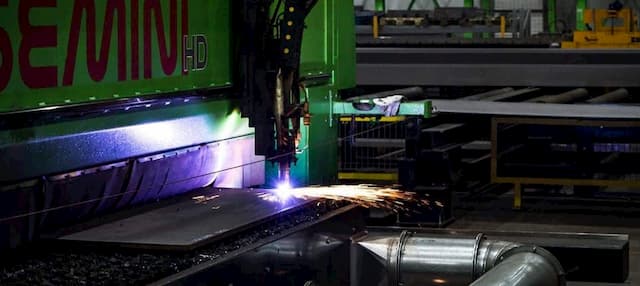For a regular engineer, the most surefire way to actually know the price of a project is through fucking up. After the client gives negative feedback, your boss asks you “Do you know how much they paid for it?!” Of course I don’t because I never do. Then you get the number. The purpose? To make you feel bad. In turn, this should increase your focus next time. But it’s too late for this project.
Cost engineering‘s objective is estimating the costs of fulfilling a project, calculating the profit and making sure to stay on schedule. A cost engineer sets time limits, gets and offers quotes, draws the budget, etc. The design engineers have to then follow these budget limits.
There exists a clear informational gap. At large, design engineers are kept in the dark about the expenses and incomes of projects. That’s far from the optimal situation. Every engineer should be included in this process.

Why? Because only knowing some hazy limits is a prescription for designing with only cost in mind. Without price awareness regarding each operation, material, etc. it curtails possibilities. The engineers are adding less value by being stringent because of a fear of exceeding some unknown budget.
Engineering Cost Problem
Having worked at a few different companies as a mechanical engineer, I have felt the problem myself. After discussing it with colleagues and doing some research, it seems prevalent in project management.
All in all, I never knew what the client is paying for a project or what we are paying to manufacture it. Certain problems stem from this.
How Do We Usually Get the Info?
Aside from the example in the intro, another option is by making a lousy design. I remember once when I was assigned to make an automatic brushing system to clean flower bulbs. It didn’t look good because I was only concentrating on functionality and keeping the cost low for the project. The head engineer approached me with the same question.
This was to highlight that the machine was expensive and we must provide the best possible product for the money. And the best product entails a nice design. The price was several times higher than I anticipated. I didn’t know the budget allows more hours spent on refining the looks.
I recently came across a master’s thesis. It was based on an actual engineering project. The budget was set at €15K. After generating over 10 concepts, the student used a matrix to make his final pick. The matrix included cost. As a result, he picked an option with the best score and went through with it. The actual cost ended up at €4K. He only got to know it for thesis purposes.
He could have gone with a different concept. There were better solutions on the table. Cost estimates based on gut feelings lead to uninformed choices.
Why Is It a Problem?

We can be pretty sure that the average engineer tries his utmost to stay within the budget. Otherwise, he’ll know about exceeding it from the sales engineer. This means re-designing with little time to spare. But the budget is usually not even told. So it’s safer to just look for the cheapest option that provides satisfying functionality.
And maybe some regard this as the right path. Keep your engineers on their toes and you’ll get the maximum amount of profit.
Probably the contrary is true. You are losing out on providing solutions with better design, functionality and innovation. Giving a client your best product will bring him back. Cost management decisions have to be made consciously. This is the only way to offer the best value for money. And every design engineer is crucial for that purpose.
Again, I came across a work project at a uni lecture recently. One engineer introduced his massive machine that included 9 motors. When asked how to perform maintenance, he answered, “Luckily, it’s not our problem”. What? He probably didn’t want to spend any more hours on an enormous project. I would never return to such an engineering company once the problems become evident.
So, what could we do?
Solving the Problem
There are a few things to do to educate your employees regarding engineering costs.
Tell them what the client is paying. This shouldn’t be used as a scare tactic when things are messed up. It really puts things into perspective – an engineer shouldn’t cut corners. The machinery isn’t cheap, to say the least.
Tell them what the budget for manufacturing is. Only this way can an engineer make the right decisions. But only knowing the budget isn’t enough. Knowing how to spend it is the key. So we get to the next points.
2. Manufacturing Capabilities
An engineer should know your usual manufacturers’ capabilities. If he makes something that can only be produced by a handful of companies in the country, the price is going to rise.
Also, capabilities include the actual possibility of manufacturing something. Every design engineer should know something about press brake tooling to know bending capabilities, what cuts can be performed, etc. It doesn’t make sense to include near-impossible solutions unless they’re crucial for the objective.
3. Manufacturing Cost
Usually, sales engineers get their offers and either accept them silently or tell the design engineers if something needs to be changed when the cost is too high. But all this info should be available to design engineers. Always. It helps to get a better feel for engineering costs.
Of course, we now have another way of doing that. Fractory’s cloud manufacturing platform is free to use for quoting and an engineer can price and compare solutions during the whole process. It allows performing design to cost analysis and fact-based decision-making.
- Personal account manager
- Quality assurance
- Payment terms for companies
- On-time delivery by Fractory
4. The Price of Materials and Standard Parts
Just print out a sheet with the most commonly used metal prices and leave it on every engineer’s desk. While the prices change in time, the relative costs remain pretty much the same. An engineer must know how choosing stainless steel over structural steel impacts the final price.
And finally, an engineering company often sticks to similar projects. Make sure the engineers know the prices of standard parts commonly used in your projects. Should you design in a way that one motor does all the work or is it financially viable to use 5 separate motors if it gives better functionality?
Eliminating the many guessing points helps everybody in the company. Deming’s 14 points and ISO 9001 also bring out the need to break the barriers. Cost engineering should be a collective effort towards better business. Engagement and knowledge are the keys.




